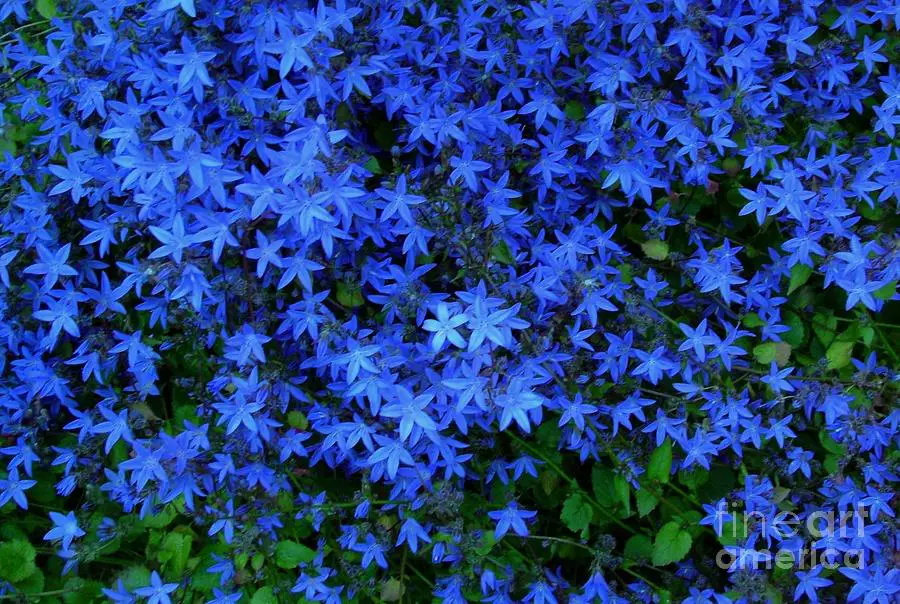
Last updated on May 20th, 2023 at 06:16 pm
Few species in the small Amsonia genus have exceptional ornamental value. Amsonia tabernaemontana often called eastern blue star or simply blue star, is one of the most beautiful.
With its thick clusters of light blue spring blooms and golden autumn leaves, it is a native perennial that needs to be featured in more northern garden designs.
Native to the Midwest, the eastern blue star is a hardy herbaceous perennial. A thick, shrubby plant with a maximum length and width of 312 feet and 2 feet is formed when many single stems emerge. It has lance-shaped green leaves whorled along long stems that end in dense panicles of beautiful 34-inch blue star flowers that put on a show from late spring to early summer.
After blooming, narrow bean-like pods are common and may provide extra late-season appeal. Eastern blue star’s deep brown principal veins contrast wonderfully with the gold willow like leaves when the temperature cools in the autumn.
What does the Blue Star flower symbolize?
The common name “blue star” refers to star-shaped flowers.
The blue star flower symbolizes resilience, strength, a force of will, and endurance, which are all represented by Amsonia blossoms.
All in all, the blue star flower symbolic meanings are:
- resilience
- strength
- the power of will
- endurance
Meaning of the Blue Star colors
Blue color
Arkansas blue star
As one of the most drought-tolerant species, Hubrichtii can handle a steady water supply to thrive. It may reach 2 to 3 feet and has chartreuse-colored foliage with delicate feathery fronds.
European blue star
Turkey and Greece are the native habitats for this dogbane flower. Or over habitat loss has taken a toll on this species.
Blue ice
This cultivar, which is less drought-tolerant, needs wetter soil. It may grow up to 18 inches tall and is endemic to the state of Connecticut.
Downy blue star
Two to three feet tall, this plant has delicate, feathery leaves covered with silver, fuzzy hairs. Zone 5 to 9 are the only places you can grow it.
Shining blue star
The glossy, leathery leaves of this blue star cultivar set it apart. Swallowtail butterflies are attracted to the nectar of steel blue blooms, so you can expect many of them to land on your garden plants. Zone 5 to 9 are the only places you can grow it.
Willowleaf blue star
If you don’t prune back your willow leaf as quickly as the royal blue blooms develop, it will become floppy. You can help your child grow three to 4 feet tall by doing this.
Interesting facts about the Blue Star flower
- Amsonia, like other Apocynaceae dogbanes, does have a white, milky sap that makes it unpleasant to insects, rabbits, deer, and a wide range of other garden pests.
- For people and animals alike, the chemical component in its milky nectar causes various skin ailments. People with latex allergies, however, are recommended to use gloves while touching the plant.
- This plant has a wide range of varieties, so any interested horticulturist may discover one that meets their demands.
- This cultivar of the Amsonia, known as ‘Blue Ice,’ is quite popular. Standing tall and leafy with star-shaped, dark blue blooms, this plant forms a cluster in the garden. Among all Amsonia, this one possesses the most eye-catching blossoms.
- Amsonia tabernaemontana ‘Short Stack’ is another well-known cultivar. A 25 cm (10 inches) maximum height is the norm for this little cultivar. Bright green leaves become a golden yellow in the autumn on this variety with sky blue blooms. Rock gardens, damp borders, and diverse perennial beds are all good places to plant it.
How to grow Blue Star flowers
The tall stalks of blue star flower plants can grow two to three feet tall when fully grown. The clumps can grow to be two to three feet across. It can, however, take up to five years for them to attain this size.
- Plant the blue star flower in well-draining neutral (6 to 7 pH) soils that can stay moist.
- Place the plant in a spot with a minimum of 50 to 60ºF.
- Water the plants at least once per week when the top of the soil feels mostly dry.
- Apply a dose of slow-release fertilizer once every one or two weeks once leaves have emerged.
How to care for Blue Star flowers
- Make sure that the blue star flower plant gets plenty of light to ensure they grow to the best of its abilities.
- Keep the plant’s environment moist in particularly dry times.
- Space them out, as these plants can reach around three feet wide.
- A moist soil type provides the most suitable growing conditions for blue star flower plants.
- Provide them with enough water when their soil looks dry.
- Prune down any dead foliage or trim them in general.
Best time to gift Blue Star flowers
Blue star flowers represent noble traits like perseverance, endurance, and strength among the Amsonia family.
A lovely flower arrangement or fresh-cut bouquet featuring blue star flowers is the best gift for someone who holds the same representation as these flowers.
Conclusion
Despite their brief burst of light blue flowers, blue star flower plants are excellent additions to any garden. Their dark green foliage can be enjoyed in the fall, turning a glorious golden yellow.
These plants require minor maintenance and are a great choice for novice gardeners and gifts to loved ones.
If you want to know and learn more about flowers, we at PansyMaiden can help you. Check out our fun, easy-to-read, and informative flower-related content that you will surely enjoy!

